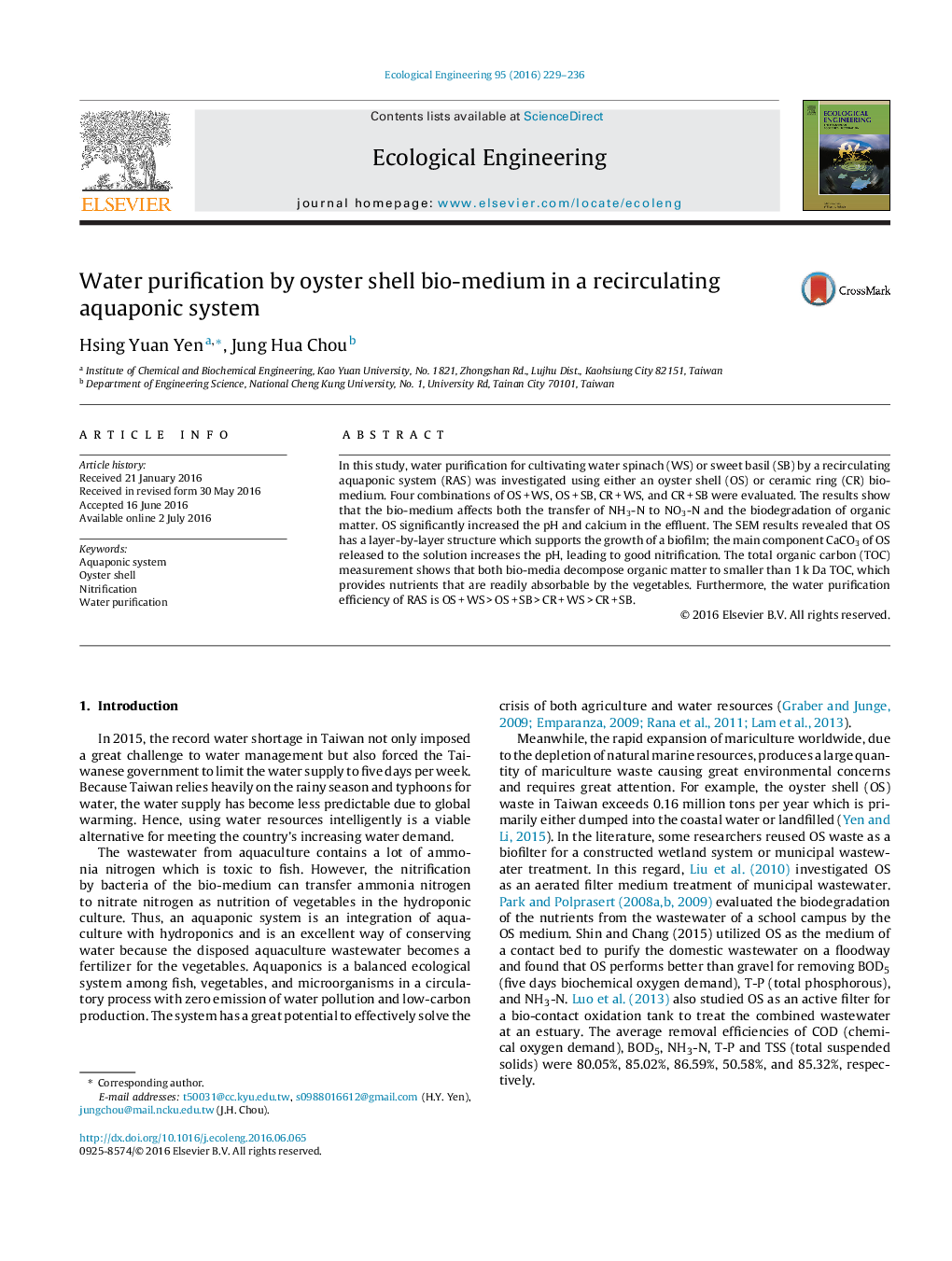| Article ID | Journal | Published Year | Pages | File Type |
|---|---|---|---|---|
| 4388447 | Ecological Engineering | 2016 | 8 Pages |
•The water purification efficiency by OS and CR bio-media for RAS was investigated.•The layer-by-layer OS structure provides a large surface for the growth of microbes.•The CaCO3 released from OS to the water increased pH and led to good nitrification.•Biofilm decomposes the MW of organic matter to smaller than 1 k Da for vegetable nutrients.•The water purification efficiency was OS + WS > OS + SB > CR + WS > CW + SB.
In this study, water purification for cultivating water spinach (WS) or sweet basil (SB) by a recirculating aquaponic system (RAS) was investigated using either an oyster shell (OS) or ceramic ring (CR) bio-medium. Four combinations of OS + WS, OS + SB, CR + WS, and CR + SB were evaluated. The results show that the bio-medium affects both the transfer of NH3-N to NO3-N and the biodegradation of organic matter. OS significantly increased the pH and calcium in the effluent. The SEM results revealed that OS has a layer-by-layer structure which supports the growth of a biofilm; the main component CaCO3 of OS released to the solution increases the pH, leading to good nitrification. The total organic carbon (TOC) measurement shows that both bio-media decompose organic matter to smaller than 1 k Da TOC, which provides nutrients that are readily absorbable by the vegetables. Furthermore, the water purification efficiency of RAS is OS + WS > OS + SB > CR + WS > CR + SB.
Graphical abstractFigure optionsDownload full-size imageDownload as PowerPoint slide
